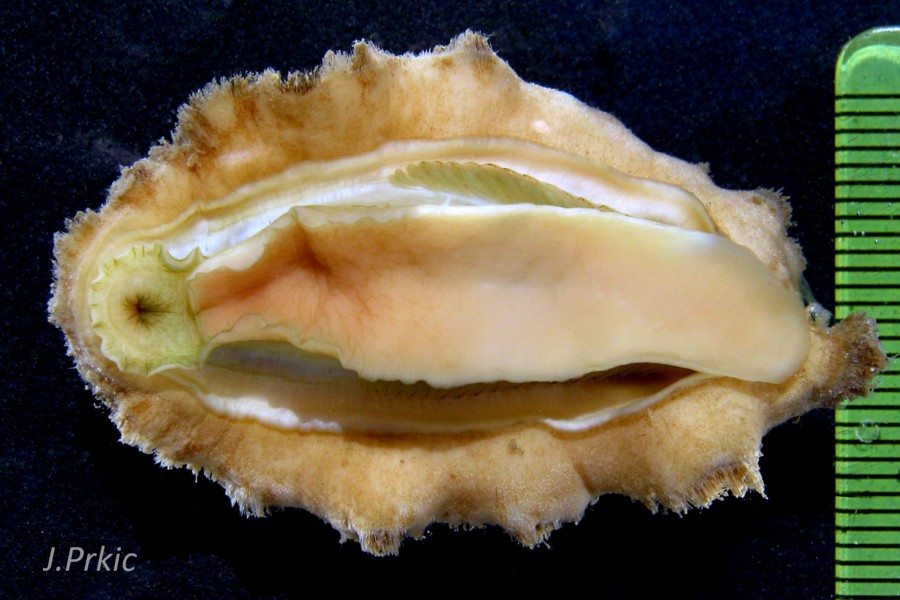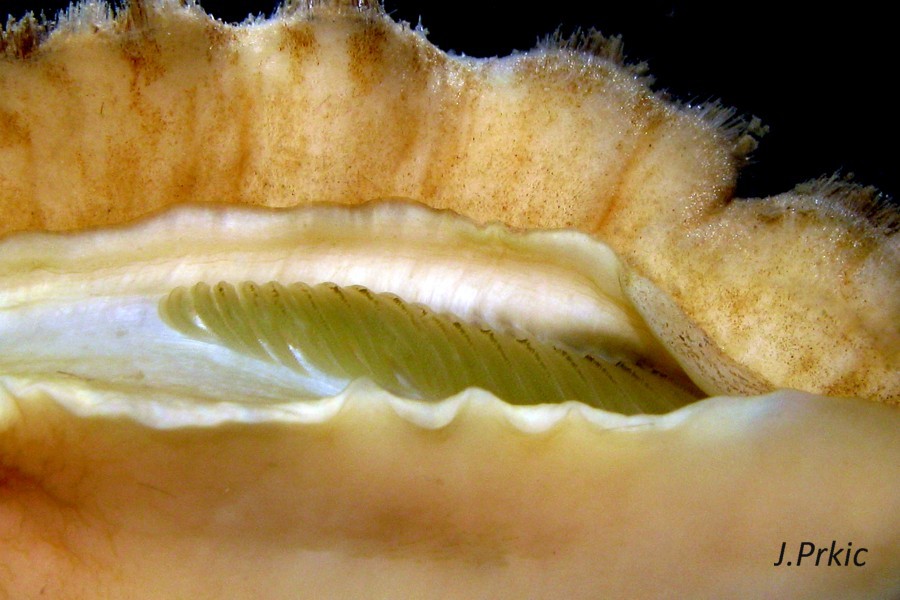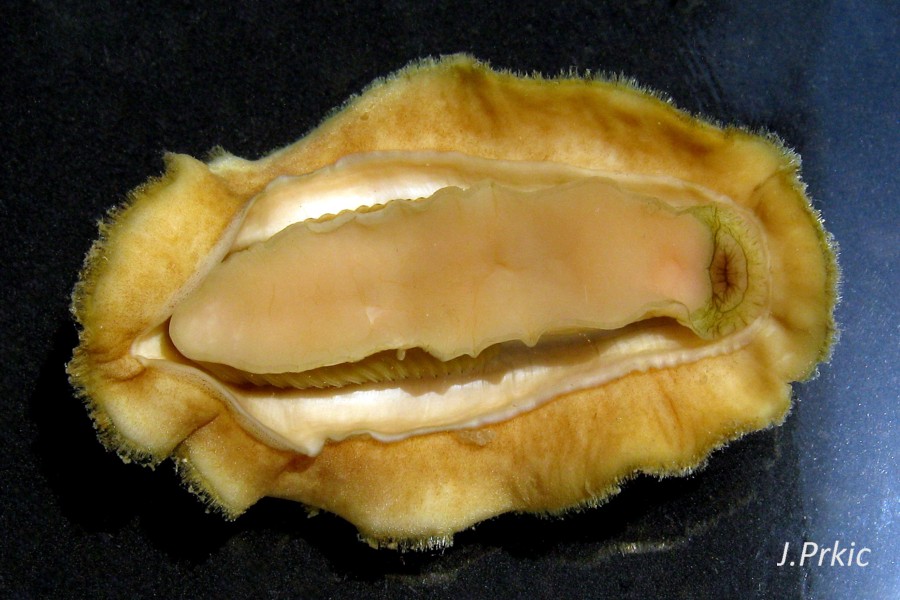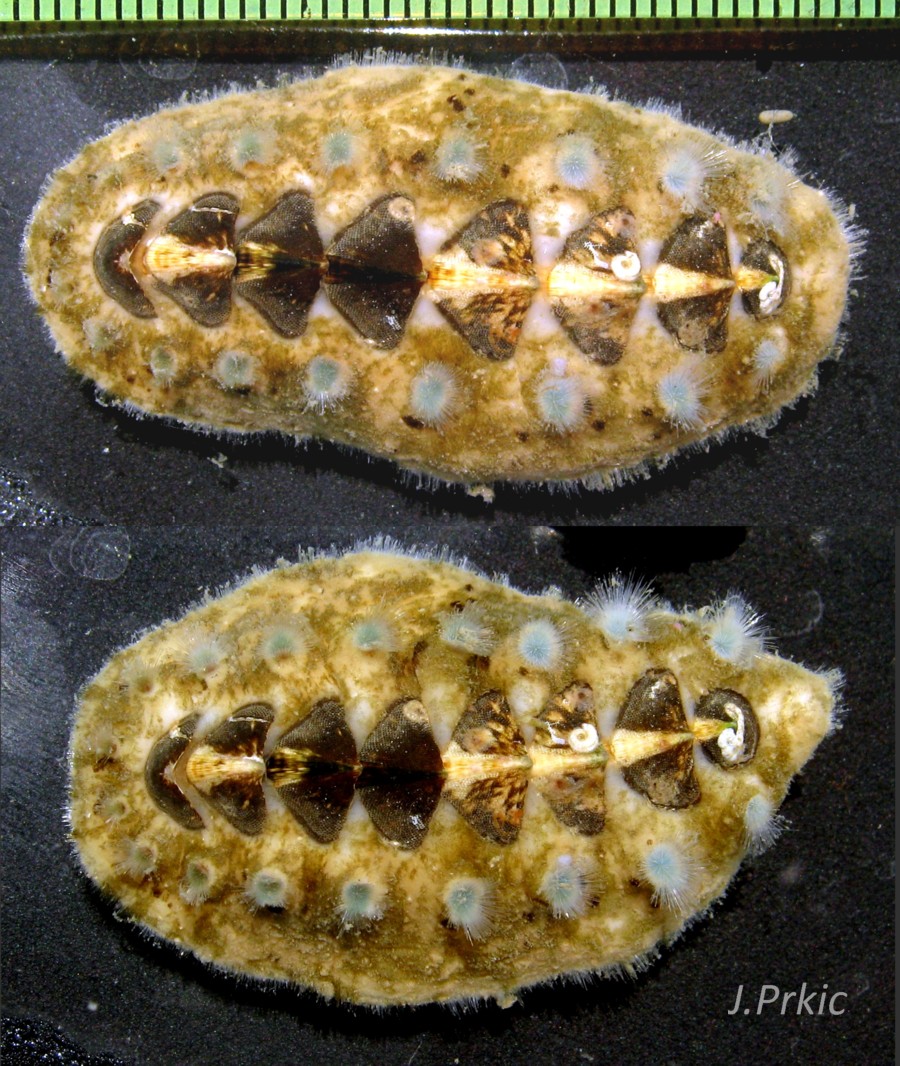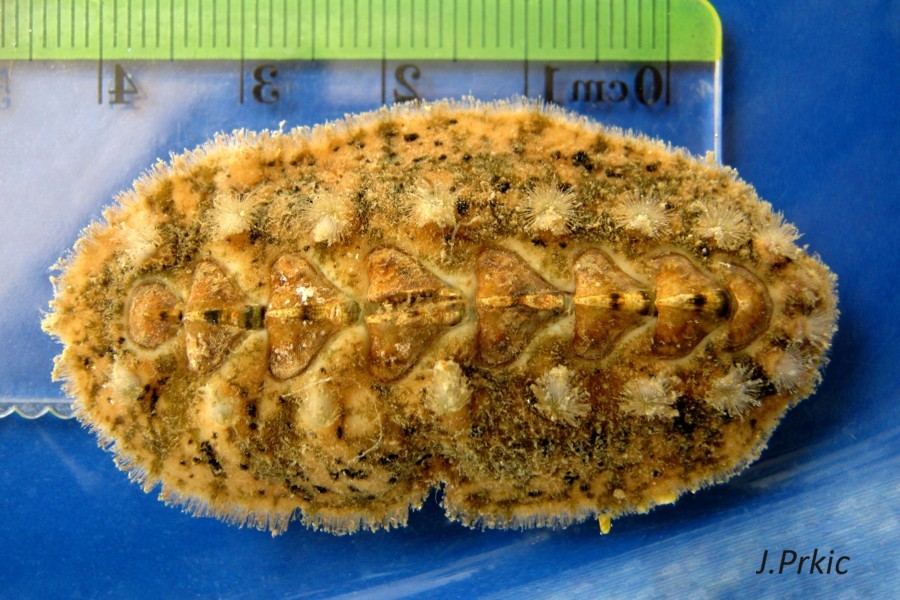Acanthochitona fascicularis
Acanthochitona fascicularis (Linnaeus, 1767)
Image of girdle and valve valve sculpture in Acanthochitona fascicularis

Close up of girdle and valve sculpture. Note the rounded shape of the granulations on the valves.
Dorsal view of Acanthochitona fascicularis
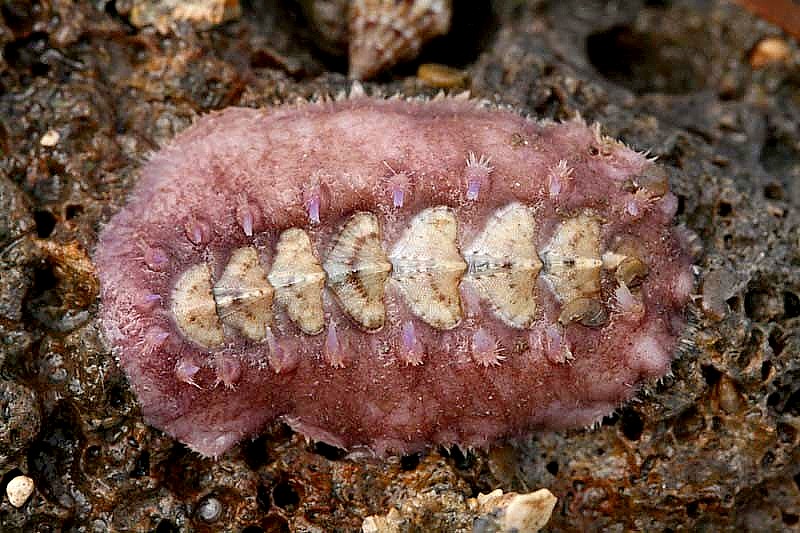
Photographed 26th September 2007 on the west coast of Ireland
Acanthochitona fascicularis
A southern species occurring from the south of the British Isles to the Mediterranean Sea, the Black Sea, the Azores and the Canary Islands. It is a relatively uncommon species in Britain whose distribution is still poorly understood.
Acanthochitona fascicularis
The map provided here shows the distribution of the species based on Conchological Society data held by the National Biodiversity Network (NBN). See terms and conditions.
The following datasets are included:
- Conchological Society of Great Britain & Ireland: marine mollusc records
Open an NBN Atlas interactive map of this data in a new window.
Lives on the underside of rocks and boulders usually lightly embedded in sand or gravel. When displaced from substrate, can roll into a ball [4]. It feeds by grazing material from the rock surface using its radula. Most common in the low shore or shallow subtidal areas but can occur to a depth of 70m.
- Acanthochitona crinita has a narrower girdle and more variable oval or tear drop shaped granulation on the valve surface.
- Baxter, J.M. and Jones, A.M. 1987. Molluscs: Caudofoveata Solenogastres Polyplacophora and Scaphopoda. London.
Taxon details available from MolluscaBase (AphiaID 138677):
Acanthochitona fascicularis (Linnaeus, 1767)
The UK NBN Atlas entry for the species can be accessed via this link.
Size: Up to about 60mm long - Britain's largest chiton. Shape: Very broad girdle with the shell making up 30-40% of the width.

